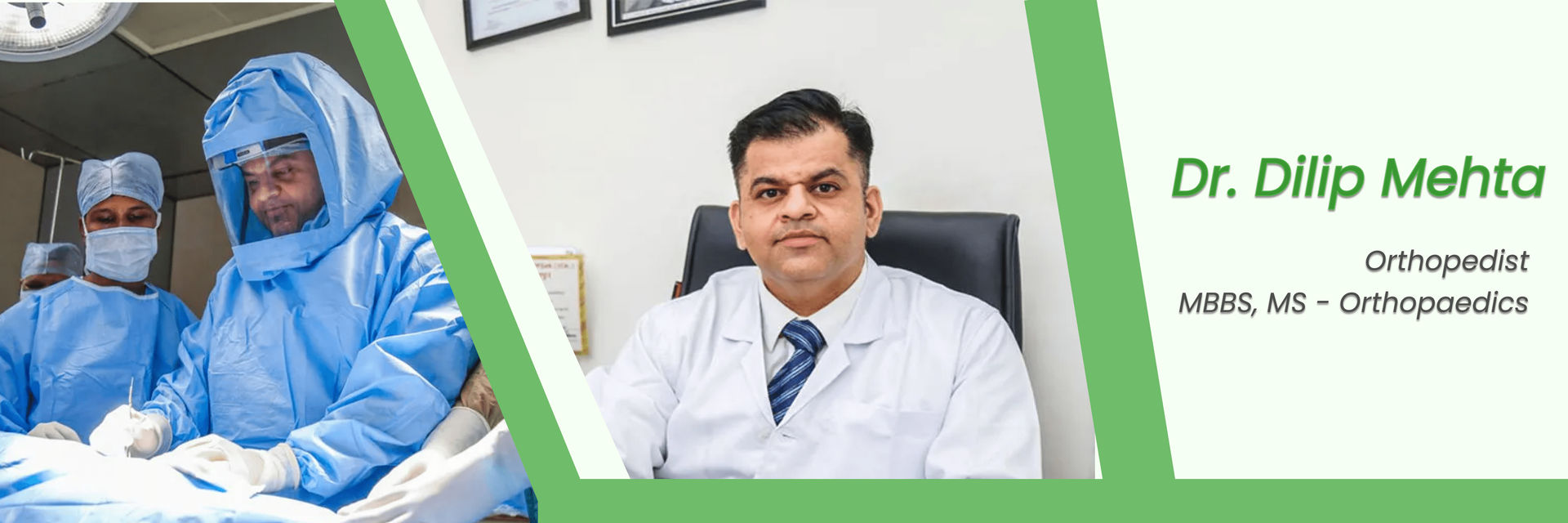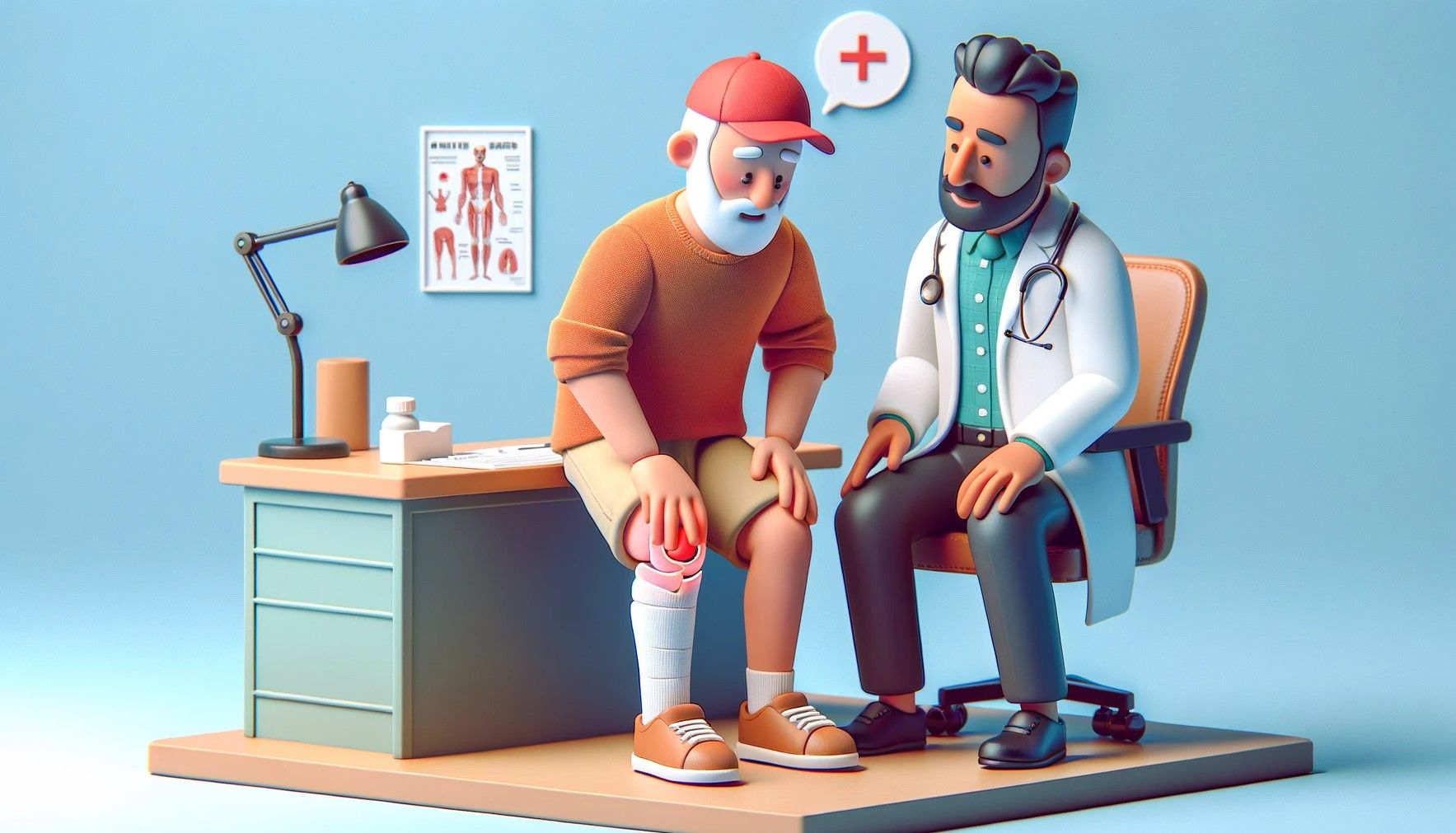Approximately 40% of the global population above 55 years experience chronic knee pain. Among these, about 2.6 million people undergo knee replacement surgery yearly. Most patients experience significant pain relief and improved mobility after knee replacement. But it is not uncommon for some to report knee pain even years after the surgery.
Now you must be thinking Can I Experience Knee Replacement Pain After 10 Years?
....and the answer is Yes! You can experience knee replacement pain after 10 years of successful surgery. Studies show that about 10% to 34% of individuals suffer from knee replacement pain after 10 years. Common causes may include wear and tear, implant loosening, infections, and muscle weakness. Consult your orthopaedic surgeon for an accurate diagnosis and appropriate treatment. This may range from conservative measures to revision surgery.
Take a look at the common causes to get a better understanding and go through our comprehensive blog to get better insights into pain management and prevention strategies.
What Are the Common Causes of Knee Replacement Pain After 10 Years?
Several factors can contribute to knee replacement pain after 10 years. Common causes include:
- Implant Wear: The artificial joint or implant components may experience wear and release particles over time. This causes inflammation and pain.
- Loosening: Implants can become loose due to bone changes or mechanical wear. This can cause pain and instability.
- Infection: Infections may occur years later, leading to pain, swelling, and potential damage to your joint.
- Muscle Weakness: Changes in muscle strength or balance may affect joint function. This may cause you discomfort.
- Postoperative Complications: Nerve damage or blood vessel injury can be caused during or after surgery. They can have long-term effects.
- Arthritis in Other Joints: Arthritis in adjacent joints can alter gait and movement, impacting the replaced knee joint.
- Biological Responses: You may have immune responses to implant materials. This leads to inflammation and pain.
- Weight: Excess body weight can increase knee joint and implant stress, potentially leading to complications and pain.
- Age and gender: Studies show that the female gender and younger age have frequently been identified as risk factors for persistent postoperative pain. Younger individuals may be at a higher risk of experiencing complications or pain after knee replacement surgery compared to older individuals. They may also experience comorbidities at a later age.
- Activity Level: Engaging in high-impact or repetitive activities that place excessive stress on the knee joint may contribute to wear and tear on the implant components.
- Overall Health: If you have pre-existing health conditions, like diabetes or autoimmune disorders, you have a higher risk of complications and delayed healing.
- Bone Quality: The quality of the bone surrounding the implant can impact the stability of the knee replacement. Poor bone quality may increase the risk of loosening.
- Implant Material and Design: This can influence long-term outcomes. Current data suggests knee replacements have an annual failure rate of 0.5-1.0%.
- Sensitivity: You may have sensitivities or adverse reactions to certain materials.
- Genetics: Genetic factors may play a role in how you respond to surgery and the long-term success of joint replacements.
Take charge of your joint health -- Get in touch with us now
How Can I Manage Knee Replacement Pain After a Decade?
Managing your knee replacement pain after 10 years involves a combination of conservative measures and medical interventions. Let’s look at some strategies:
- Consult with your doctor: Seek guidance from your orthopaedic surgeon to assess the cause of the pain and determine an appropriate treatment plan.
- Physical Therapy: Engage in targeted exercises to strengthen the muscles around the knee. This will improve joint stability. Get a personalised program to address your specific needs.
- Pain Medications: Over-the-counter or prescription pain medications may be recommended. They will manage pain and inflammation.
- Weight Management: Maintaining a healthy weight can reduce stress on the knee joint and alleviate pain. Adopt a balanced diet. Engage in low-impact exercises to support weight management.
- Activity Modification:
- Adjust your activities to minimise stress on the knee.
- Avoid high-impact activities.
- Incorporate joint-friendly exercises as per your doctor's recommendation.
- Use of Assistive Devices: Assistive devices like canes or braces provide additional support. This will reduce strain on the knee.
- Injections: Corticosteroid injections may be considered to alleviate inflammation. They will also improve joint lubrication.
- Revision Surgery: If there are issues with the knee implant, such as wear, loosening, or infection, revision surgery may be required. This will replace or address the problematic components.
Don’t ignore your knee pain -- Schedule an appointment today
What Can I Do to Prevent Knee Replacement Pain 10 Years Post-Surgery?
There are steps you can take to potentially reduce the risk of knee replacement pain after 10 years post-surgery and promote overall joint health:
- Follow Postoperative Instructions: Adhere to postoperative care instructions, including rehabilitation exercises and activity restrictions recommended by your surgeon.
- Regular Exercise: Engage in regular, low-impact exercises to strengthen the muscles around the knee. Focus on activities like walking and swimming, which are easier on the joints.
- Maintain a Healthy Weight: Excess body weight can contribute to increased stress on the knee joint. Maintaining a healthy weight can reduce the risk of complications and improve overall joint health.
- Balanced Diet: Consume a diet rich in nutrients, including vitamins and minerals that support joint health. Consider incorporating foods with anti-inflammatory properties, such as omega-3 fatty acids found in fish.
- Stay Hydrated: Proper hydration is important for joint lubrication and overall health.
- Protect Your Joints: Avoid activities that place excessive stress on the knee joint, such as high-impact sports or activities with repetitive joint loading. Use proper techniques and protective gear when engaging in physical activities.
- Regular Check-ups: Attend regular follow-up appointments to monitor the condition of your knee replacement and address any emerging issues promptly.
- Be mindful of pain by paying attention to any changes in your knee. Consult your doctor if you experience persistent pain, swelling, or discomfort.
- Quitting smoking can have positive effects on overall health and surgical outcomes.
- Manage Chronic Conditions: If you have other medical conditions, such as diabetes or arthritis, work with your doctor to manage these conditions effectively, as they can impact the success of your knee replacement.
Get insights for knee replacement pain from our team of experts -- Get in touch with us now
Did you hear clicking sounds from your knee implant? Then, understand what they mean.
When Should I Seek Medical Attention for Knee Replacement Pain?
If you experience knee replacement pain, monitoring the symptoms is important. Seek medical attention if you notice any of the following symptoms:
- Persistent Pain: Consult your doctor if you have persistent or worsening pain in your knee. Significantly, if it interferes with your daily activities and does not respond to over-the-counter pain medications. Studies show that approximately 20% of total knee replacement patients experience persistent postsurgical pain one year after surgery.
- Swelling and redness: Unexplained swelling, redness, or warmth around the knee joint may indicate inflammation or infection. Prompt evaluation is crucial in such cases.
- Instability or Weakness: If you notice a sudden instability or weakness in the replaced knee, it could indicate a problem with the implant or surrounding structures.
- Fever: Systemic symptoms such as fever or chills may indicate an infection. Seek medical attention.
- Changes in Range of Motion: Consult your doctor if there is a decrease in your ability to bend or straighten the knee.
- Unusual Noises: If you hear new or unusual noises from your knee, such as clicking, popping, or grinding, it could signal a problem with the implant.
- Numbness or Tingling: Sensations of numbness or tingling around the knee or surrounding areas may indicate nerve involvement and need evaluation.
- Pain at Rest: Pain that occurs even when you are at rest or not putting weight on the knee may be a cause for concern.
- Difficulty Walking: If you experience difficulty walking, bearing weight on the knee, or significant changes in your pace, consult your doctor.
- Delayed Healing: If you had recent surgery and noticed delayed wound healing, increased drainage, or signs of infection at the surgical site, seek prompt medical attention.
References:
https://www.hss.edu/condition-list_knee-revision.asp
https://www.ncbi.nlm.nih.gov/pmc/articles/PMC3289991/
https://orthospinenews.com/2019/06/04/demand-for-knee-replacement-grows-5-percent-worldwide/



